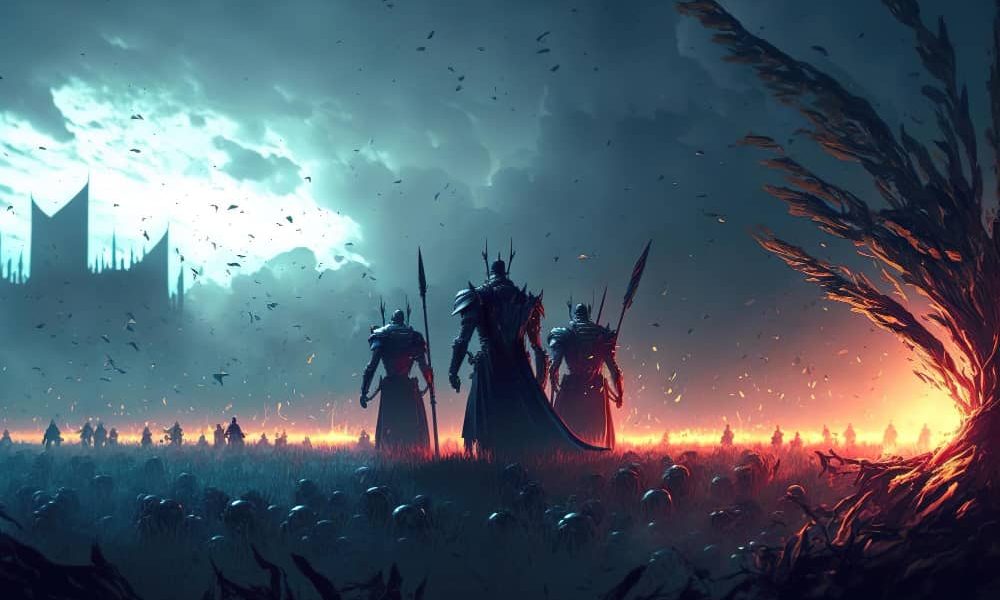
Discover in detail how the dinosaurs became extinct. We explore theories of asteroid impact, climate change, and subsequent evolution.
The dinosaurs, those fascinating creatures that dominated the Earth for millions of years, have captured the imagination of humanity since the discovery of their first fossils. Their extinction, an event that marked the end of one era and the beginning of another, continues to be the subject of intense debate and scientific study.
In this article, we will explore the most accepted theories and the latest research that tries to unravel the mistery how these prehistoric giants disappeared from our planet.
The age of the dinosaurs
A long reign
Dinosaurs, those majestic creatures that once dominated our planet, They emerged approximately 230 million years ago, marking the beginning of the Triassic period. This period saw the birth of an incredible diversity of species from small agile dinosaurs to gigantic titans that dominated the landscape.
This wide range in size and shape indicates a extraordinary adaptation to diverse environments and ecological niches. The Cretaceous, the last stage of its existence, witnessed a explosion in its diversity a period that would culminate in one of the greatest enigmas of natural history: How dinosaurs became extinct.
The diversity of dinosaurs
During the Mesozoic, dinosaurs branched into a wide range of species, showing remarkable adaptability and evolution. On the one hand, we had fast predators like the Velociraptor known for their agility and hunting cunning.
On the other hand, peaceful giants like Brachiosaurus, which fed from the treetops. This diversity is a clear indication of complex and highly interconnected ecosystems, where each species played a crucial role. The question about How dinosaurs became extinct It becomes even more intriguing when considering this ecological complexity.
Theories about extinction
The impact of an asteroid
The predominant theory in the scientific community suggests that the main cause of the extinction of the dinosaurs was massive asteroid impact about 66 million years ago. This cataclysm, known as the Chicxulub impact released unimaginable energy, equivalent to billions of nuclear bombs.
The magnitude of this event could explain how a group as diverse and adaptable as dinosaurs could almost completely disappear in a relatively short geological period.
Evidence of impact
The presence of iridium rich layers in sediments from around the world, dating from the Cretaceous-Paleogene boundary, is one of the most compelling evidence of this impact. Iridium, abundant in asteroids but rare in the Earth’s crust, together with the existence of Chicxulub crater are key pieces to understand How dinosaurs became extinct.
Climatic and ecological changes
Other hypotheses suggest that significant climatic and ecological changes possibly exacerbated by massive volcanic eruptions like those of the Deccan, played an important role in the extinction of the dinosaurs. These changes would have drastically altered living conditions on Earth, affecting food availability and altering entire ecosystems.
The greenhouse effect and ocean acidification
The massive release of greenhouse gases like carbon dioxide, from these volcanic eruptions could have caused a extreme global warming and ocean acidification.
These phenomena would have had devastating effects on the flora and fauna of the time, creating a hostile environment even for the most adapted organisms, which helps explain How dinosaurs became extinct.
Life after the dinosaurs
The rise of mammals
After the extinction of the dinosaurs, the mammals, who had lived in the shadow of these giants began to flourish and diversify.
Taking advantage of the ecological niches left vacant, these mammals evolved in a multitude of forms, eventually giving rise to primates and, therefore, humans. This period marked the beginning of the cenozoic era also known as the ‘age of mammals’.
The legacy of the dinosaurs
Despite their extinction, the legacy of the dinosaurs endures. The Modern birds are direct descendants of certain groups of theropod dinosaurs which demonstrates the persistence and adaptability of some branches of dinosaur life.
This evolutionary link is a fascinating reminder that although dinosaurs became extinct as a group, their biological and ecological influence lives on in our world today.
This is how our planet changed
The extinction of the dinosaurs is a reminder of the fragility and resilience of life. This catastrophic event not only ended a million-year reign, but also opened the door to new ways of life including us, humans.
The story of dinosaurs and their disappearance continues to fascinate and teach valuable lessons about evolution, survival and change in our dynamic world.







